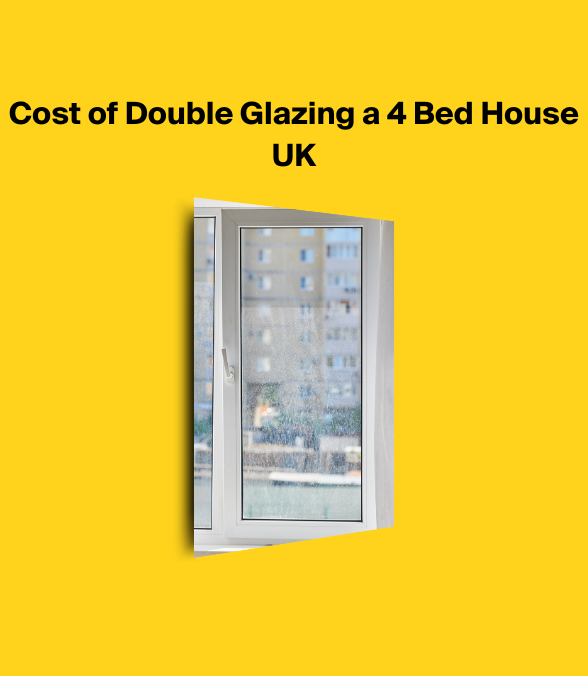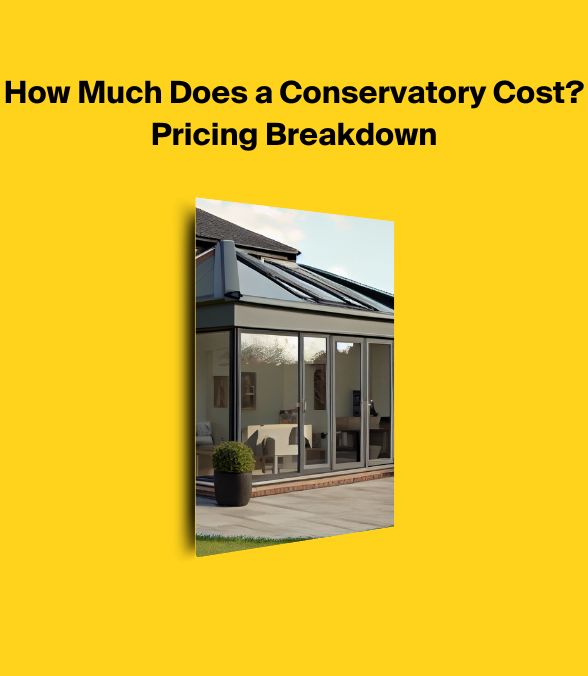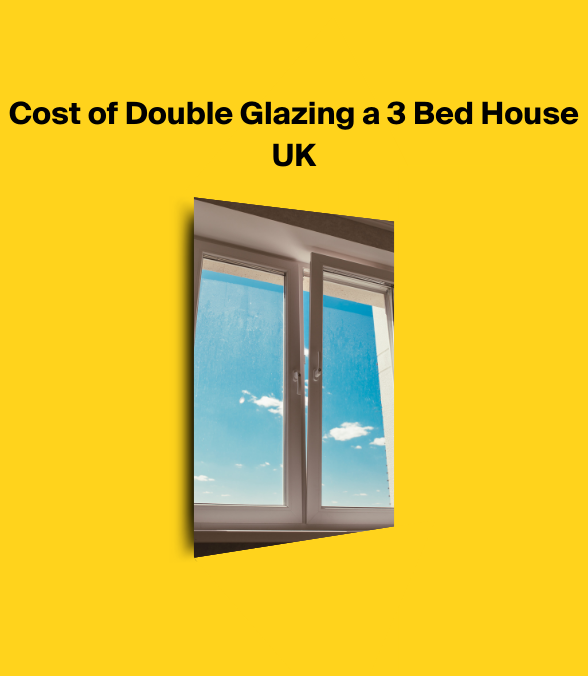Types of Conservatories in Homes
Choosing the right type of conservatory can enhance your home’s liveability and aesthetic appeal. This resource breaks down the key characteristics of popular types of conservatories, such as Victorian, Edwardian, Gable End, and Lean-to.
With a focus on function and style, find the conservatory that aligns with your needs and elevates your property.

Build your window today!
Get a Quote
Different Conservatory Types Overview

- Conservatories come in various styles like Victorian, Edwardian/Georgian, Gable End, and Lean-to, each with distinct design features and functionality suited to different architectural preferences and space requirements.
- Personalisation of conservatories is extensive, involving selections of conservatory roof types, materials, and colours that influence aesthetics and energy efficiency, as well as window and door choices that can impact functionality, light, and ventilation.
- Practical considerations for planning conservatory space include understanding local planning permissions, maximising natural light, integrating with garden landscapes, creating multifunctional living spaces, and combining styles for a custom-designed, energy-efficient conservatory.
Discovering Popular Conservatory Styles
Conservatories come in an array of types of conservatories, each with unique designs, colours, and materials, catering to diverse architectural styles and personal tastes. The most popular conservatory styles include:
- Victorian
- Edwardian/Georgian
- Gable End
- Lean-to
Each offering a unique blend of design and functional features. Whether you’re aiming for a traditional aesthetic or a modern design, there’s a conservatory style that’s just right for you.
Victorian Style Conservatories
- Multifaceted layout
- Apex roofline adorned with crests and finials
- Beautiful rounded bay window front The bay window design, complete with additional side windows, facilitates ample natural light while providing expansive views of your garden.
The Victorian conservatory’s appeal is enriched with ornate design features such as gothic arched glazing bars, decorative crestings, and intricately leaded glass. Furthermore, the glass roof not only increases natural light but also retains heat, often featuring elaborate details in synergy with the Victorian aesthetic. The result is a traditional, yet versatile space that serves as a stunning extension to your home, making the Victorian conservatory a popular choice.
Edwardian/Georgian Style Conservatories
If you prefer a minimalist aesthetic with clean lines, then an Edwardian conservatory, also known as Georgian conservatory, may be the perfect choice for you. They feature a distinctive rectangular shape, giving them a timeless appearance that easily adapts to a variety of house styles.
Unlike their Victorian counterparts, these conservatories are designed with less ornate detailing, focusing more on functionality. The key features of these modern conservatories include:
- Rectangular shape that enhances the usable living space, making it easy to furnish and maximise interior layouts
- Sleek lines and pitched roof design that ensure a spacious and modern extension
- Compatibility with a wide range of architectural styles
These modern conservatory designs, particularly gable conservatories, offer a practical and stylish solution for extending your living space.
Gable End Conservatories
Gable End conservatories are known for their grandeur and spacious feel. They feature:
- A unique roof with two sloping sides that meet at a central ridge, creating a high pitched roof with an ornate roof ridge
- An upright front with expansive glazing
- The vertical orientation of the front elevation allows windows to extend to the apex of the roof, which enhances the spacious feel and floods the interior with natural light.
Built upon an Edwardian square frame, gable-end conservatories enhance the usability of space and versatility by incorporating a full-height apex roof. These conservatories evoke a sense of historic grandeur, suitable for modern homes wishing to channel that traditional aesthetic. Whether you have a heritage or modern home, a Gable End conservatory can fit seamlessly, adding an element of elegance.

Build your window today!
Get a Quote
Lean-to Conservatories
Lean-to conservatories, also known as sunrooms or garden rooms, are characterised by their simplicity and versatility. They feature a rectangular shape, with a roof that leans onto the main property, contributing to the ease of installation of a lean to conservatory.
These conservatories are particularly suited for homes with low rooflines or limited outdoor space, such as bungalows, due to their compact design. Their versatility means they can adapt to both large and smaller areas, fitting seamlessly into awkwardly shaped sections of a property.
So, if you’re looking for a simple, affordable, yet stylish conservatory, a Lean-to design might be the perfect fit for you.
Customising Your Conservatory

Once you’ve chosen your preferred conservatory style, the next step is to personalise it to reflect your individual style and needs. This might involve selecting the ideal roof, picking the perfect colour scheme, or choosing the most suitable materials.
Let’s explore some of the options available for customising your dream conservatory.
Roof Options
The roof of your conservatory plays a significant role in determining its appearance, functionality, and energy efficiency. Also, looking into the cost of a conservatory is vital in getting the best deal for your conservatory. You can choose from different types of roofs, each with their unique advantages and uses:
- Glass roofs: Glass roofs have evolved with technology to reduce the ‘greenhouse’ effect and minimise maintenance needs.
- Tile roofs: Tile roofs are durable and provide excellent insulation, keeping your conservatory warm in the winter and cool in the summer.
- Polycarbonate roofs: Polycarbonate roofs are lightweight and cost-effective, making them a popular choice for conservatories.
Consider your needs and preferences when choosing the roof for your conservatory.
If you’re looking to enhance thermal efficiency, you might consider switching from an older roof to a solid tiled or hybrid roof. On the other hand, while polycarbonate roofs are economical, they often suffer from overheating, noise issues, and can negatively affect property value, emphasising the need for careful selection of the right roof type.
Colour and Material Choices
Choosing the right colours and materials for your conservatory can have a significant impact on its overall appearance and energy efficiency. Colour options for conservatories range from traditional ‘White’, ‘Cream’, and ‘Light Oak’ to modern ‘Ebony Black’, ‘Sage Green’, and ‘Grey’, providing you with a wide range of choices to suit your personal tastes and home’s architectural style.
When it comes to material selection, there are several options to consider:
- UPVC: popular choice due to its durability and minimal maintenance requirements
- Aluminium: known for its lightweight strength
- Timber: valued for its timeless aesthetic and great insulation properties
Ultimately, your choice of materials would depend on factors such as your personal taste, energy efficiency requirements, and the design of your existing property.
Door and Window Selections
The selection of doors and windows is another important aspect of conservatory customisation. From sleek, sliding glass panels of patio conservatory doors to the versatile opening options of bi-fold doors, the choice of doors can significantly enhance the aesthetic appeal and functionality of your conservatory.
When it comes to windows, top and side-openers can enhance ventilation and ease of cleaning. Moreover, upgrading older doors and windows to A-rated glazing can lead to a significant increase in energy efficiency, thanks to advanced technologies that reduce heat transfer.

Build your window today!
Get a Quote
Planning Your Conservatory Space
With your conservatory style and customisation options sorted, it’s time to plan your conservatory space. This involves considering factors like home suitability, desired style, and specific requirements.
Maximising Natural Light
One of the most desirable features of a conservatory is the natural light it brings into your home. This can be maximised through the use of solar control glass, self-cleaning glass, and large glazed windows.
Solar control glass reflects sun rays to reduce glare while self-cleaning glass uses sunlight to break down dirt. This not only maximises natural light but also offers maintenance and comfort benefits.
Additionally, the incorporation of roof lanterns or a roof light can dramatically improve the brightness of a conservatory by adding more natural light from above.
Creating Extra Living Space
A conservatory can serve as a multi-functional space, serving as an extra lounge, dining room, or even as a spare bedroom, thereby extending the living areas within your home. The incorporation of large expanses of glass not only increases the natural light in your home but also contributes to the creation of a bright living environment.
Light interior decor and strategically placed mirrors can enhance the brightness and spacious feel of a conservatory, making it more inviting. Larger conservatory structures are ideal for creating designated spaces such as dining areas or areas to showcase indoor plants, adding specific functionality to your home.
Garden Integration
The beauty of a gable conservatory lies in its ability to seamlessly integrate with your garden. By strategically placing plants and adopting a garden-inspired decor, you can create a harmonious indoor-outdoor flow with an exceptional conservatory design.
Some tips for creating a garden-inspired conservatory are:
- Use large, glazed windows and doors to showcase the surrounding landscapes and gardens, effectively bringing the garden views inside.
- Adopt a coastal theme with nautical stripes and refreshing colours to evoke a garden atmosphere.
- Use blinds or curtains to mitigate sunlight glare within your conservatory.
Navigating Planning Permission and Building Regulations
Navigating planning permission for a conservatory, as well as building regulations can be a daunting task, especially for first-time homeowners. Fortunately, in the UK, most conservatories fall under ‘permitted development’ rights, which means you can construct without the need for planning permission if specific criteria are met.
However, planning permission may be necessary if the conservatory covers more than half the area surrounding the house or if the proposed build is on designated lands, such as conservation areas, or exceeds size limits of permitted development. Also, conservatories are generally exempt from building regulations if they are under 30 square meters, at ground level, have an independent heating system, and maintain a thermal barrier between the dwelling and the conservatory.
Hybrid and Combination Conservatories
If you’re looking for something unique, consider hybrid and combination conservatories. These are custom-designed structures that blend favourite features from multiple conservatory styles, offering a bespoke solution tailored to your needs.
Examples of conservatory styles include:
- P-shape, which combines lean-to and Victorian or Edwardian elements
- T-shaped, which can integrate Victorian, Edwardian, or Gable styles
- Hybrid roofs, which combine solid and glazed sections for improved insulation and natural light entrance
However, it’s important to account for extra planning time due to the bespoke nature of blending different components.

Build your window today!
Get a Quote
Making Your Conservatory Energy Efficient
An energy-efficient conservatory offers several benefits:
- It reduces your carbon footprint
- It saves you money on energy bills
- Advanced glazing options like solar control glass and laminated glass improve energy efficiency by reducing heat loss and increasing insulation.
Insulated conservatory roofs and hybrid roofs with insulated aluminium and glass panels greatly enhance the energy efficiency and usability of the space throughout the year. Additional insulation of the floor and the use of thermal blinds can significantly reduce heat loss, leading to a potential improvement in energy efficiency by approximately 70%.
Conservatory Types - Final Summary
In conclusion, whether you’re looking for a traditional Victorian style conservatory or a minimalist Edwardian design, there’s a conservatory style to suit every taste and requirement. With a myriad of customisation options, you can create a unique space that perfectly complements your home. Remember to consider factors like energy efficiency, planning permissions, and building regulations in your planning process. With careful planning and consideration, your dream conservatory can become a reality.
Frequently Asked Questions
What is the difference between a conservatory and an orangery?
The main difference between a conservatory and an orangery lies in their roof structure and appearance. Orangeries typically have a lantern roof and a traditional single-story extension look, while conservatories have a fully glazed roof and a greenhouse-like appearance.
What is the difference between a sunroom and a conservatory?
A sunroom and a conservatory differ in their roofing; a sunroom has a solid tile or slate roof and ceiling, while a conservatory has a glass or polycarbonate roof, allowing more heat and light through.
What can I have instead of a conservatory?
Instead of a conservatory, you can consider alternatives such as an orangery, garden office, veranda, or pergola. Each offers a different style and function to suit your preferences.
What are the main types of conservatories?
The main types of conservatories are Victorian, Edwardian/Georgian, Gable End, and Lean-to, each with unique design features and benefits. Choose the type that best suits your preferences and needs.
Can I customise my conservatory?
Yes, you can customise your conservatory by selecting from a range of materials, colours, roof options, and window and door choices.

Build your window today!
Get a Quote











